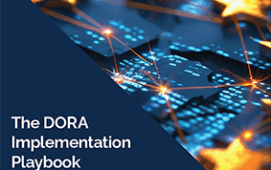J.P. Morgan Chase is building a business-aligned reference data hub in support of the major reengineering of its credit trading operation onto a single platform. The hub – essentially a central global hub for credit reference data – will commingle corporate data, vendor data and business-specific data into a single, unified service available to all applications within the credit area of the bank.
Cyril Chaboissier, senior business analyst for market and reference data at J.P. Morgan Credit Trading, speaking at this month’s Financial Information Management (FIMA) conference in London, outlined the project in a presentation to delegates entitled Key Challenges of Reference Data in Credit Trading.
According to Chaboissier, the project’s goals included reduced risk, and improvements in process, control and governance. The project aims also to improve settlement performance, while reducing confirmation times and execution costs.
The project demonstrates how a major bank addressed the lack of administrative and descriptive data for credit default swaps, an area highlighted in A-Team’s recent survey, Fixed Income Pricing: Are Evaluations Gaining Value? (available at http://about.reuters.com/datascope/), which was commisioned by Reuters.
Consolidating all sources into a single, unified hub was also a major challenge for J.P. Morgan, given its past history of acquisitions – which typically bring autonomous approaches to handling reference data into the fold. Over the years, what’s now J.P. Morgan Chase has comprised several substantial acquisitions and mergers, among them: Chase Manhattan Bank, J.P. Morgan & Co., BankOne Corp., Robert Fleming & Co., Chemical Bank and Manufacturers Hanover Bank.
In creating its central credit data repository, J.P. Morgan’s credit trading group is drawing upon two major resources. The first is an existing corporate data hub in the equities area. According to Chaboissier, the bank has established a strong governance model for this, and is seeking a similar approach in credit.
Under this model, the bank assigns responsibility for maintaining up-to-date and accurate security and entity data to so-called data guardian groups, based in New York, London and Tokyo. Each data object is ‘owned’ by a particular group, so that any change to that object is handled by the assigned group.
The second major resource is Markit’s Reference Entity Database (RED). J.P. Morgan is one of Markit’s 16 owner client banks, and makes substantial use of the RED database in its credit data hub. (In fact, J.P. Morgan was one of the three original developers of the RED database, which was sold to Markit in 2003.) According to Chaboissier, J.P. Morgan – as a market leader in credit derivatives and syndicated loans, as well as in announced mergers and acquisitions – makes substantial use of credit default swaps to manage its credit risk.
“When dealing with credit default swaps,” he said, “the reference entity has to be absolutely correct on all contracts.”
In the credit default swaps market, the ‘reference entity’ refers to the name of the issuer of the original bond that underlies the swap. The so-called ‘reference obligation’ describes the bond itself. The swap provides a level of protection for the buyer of the reference obligation – essentially, insurance against the possibility that the reference entity will default – for which the buyer pays the seller of the swap a fee, usually monthly and in arrears. A premium is paid for swaps involving so-called distressed issuers.
The legal relationship between the reference entity and the reference obligation, is itself known as a ‘pair.’ Identifying both the pair and the reference entity is key to participation in the credit default swaps marketplace.
RED assigns each pair a unique code, whatever the reference entity. Under its drive to a unified offering, J.P. Morgan is mapping its corporate data – commingled with external sources such as Bloomberg, index data and ratings data – to RED’s Cusip-Linked Entity Markit Code, or Clip. The system checks the corporate-sourced reference entity against the RED database, and any unvalidated entries are researched and updated using legally approved names. Results are distributed to downstream applications using XML over MQ-series messaging platforms for asynchronous communications, and database replication techniques or XML over Web Services for synchronous communications.
Chaboissier believes that RED’s importance will be elevated by recent statements by the U.S. Federal Reserve and the U.K. Financial Services Authority (FSA), both of which have said they wish to see higher confirmation rates in the credit default swaps marketplace and have called on market participants to get their respective houses in order. Meanwhile, Bloomberg, Reuters, Standard & Poor’s, the Depository Trust & Clearing Corp. (DTCC) and Swapswire have all adopted the Clip nomenclature for their credit default swaps activities. RED offers the nine-digit Clip codes – which link issuers to reference entities and are mandatory for DTCC reporting dealers since last summer – through a relationship with Standard & Poor’s.
For J.P. Morgan, Chaboissier said, RED has made an impact on its straight-through-processing, electronic trading and confirmation times. He said the STP rate for the bank’s Murex risk management platform has risen as a result of the implementation. Indeed, Murex this month announced a strategic partnership with Markit that offers mutual customers integrated access to Markit credit pricing and reference entity data Murex’s credit derivatives trading and risk management platform. The alliance promise to allow joint customers to enhance their trading and risk management capabilities with online access to market standard reference entity names together with benchmark credit default swap and bond pricing.
Markit is jointly owned by its major clients, giving it unparalleled access to entity identifiers used in the marketplace. Aside from J.P. Morgan, its owners are: ABN Amro, Bank of America, Barclays Capital, Bear Stearns, BNP Paribas, Canadian Imperial Bank of Commerce, Citigroup, Commerzbank, Credit Suisse, First Boston, Deutsche Bank, Dresdner Kleinwort Wasserstein, Goldman Sachs, HSBC, Lehman Brothers, Merrill Lynch, Morgan Stanley, National Australia Bank, Nomura Securities, Rabobank International, Royal Bank of Canada, Royal Bank of Scotland, TD Securities, UBS and Westpac.
Subscribe to our newsletter



